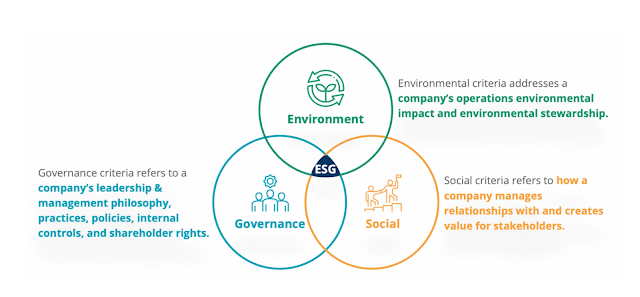What is Infographics?
An infographic is a visual representation of information, data, or knowledge that is designed to convey complex concepts or data in a clear, concise, and engaging manner. It combines text, images, charts, graphs, icons, and other visual elements to present information in a visually appealing format that is easy to understand and digest. Infographics are used to simplify complex ideas, highlight trends, compare data, tell stories, and present insights to a wide audience.
Key characteristics of infographics include:
Visual Elements: Infographics prominently feature visual elements such as images, illustrations, icons, graphs, charts, and diagrams. These visuals are strategically used to enhance the message and make the information more accessible.
Data Representation: They often present data in a visual format, making it easier to grasp patterns, trends, and relationships within the data. Bar charts, pie charts, line graphs, and maps are commonly used to represent numerical data.
Hierarchy and Organization: Infographics use a well-structured layout that guides the reader's eye through the information. Clear headings, subheadings, and sections help organize the content and convey the message effectively.
Simplicity and Clarity: The primary goal of an infographic is to simplify complex information. It avoids jargon, excessive details, and unnecessary elements, focusing on conveying the core message succinctly.
Color and Design: Colors are used strategically to highlight important points and create visual interest. The overall design is aesthetically pleasing and aligns with the topic or theme of the infographic.
Narrative Flow: A well-designed infographic follows a logical narrative flow, guiding the reader from one piece of information to the next in a coherent manner.
Engagement: Infographics are designed to capture the reader's attention and encourage them to explore the content. They can be shared on various platforms, including social media, websites, presentations, and printed materials.
Infographics can be used in various contexts, including:
Education: Infographics are widely used in educational materials to explain complex concepts, historical timelines, scientific processes, and more.
Marketing and Advertising: Businesses use infographics to showcase product features, compare different options, present survey results, and convey brand messages.
Data Journalism: Journalists use infographics to visualize data-driven stories, making news articles more engaging and informative.
Reports and Presentations: Infographics can be integrated into reports and presentations to convey research findings, market trends, financial data, and more.
Healthcare and Medicine: In the medical field, infographics can explain medical procedures, health tips, and information about diseases.
Social Causes: Nonprofits and advocacy groups use infographics to raise awareness about social issues, present statistics, and call for action.
Types of Infographics:
Statistical Infographics: These infographics use charts, graphs, and diagrams to represent numerical data and statistics. They are effective for showcasing trends, comparisons, and relationships.
Informational Infographics: Informational infographics explain a process, concept, or sequence of events. They often use step-by-step visuals and annotations to guide the viewer through the information.
Timeline Infographics: Timeline infographics present historical events or a chronological sequence of steps. They're commonly used to illustrate historical developments, project timelines, or personal achievements.
Comparison Infographics: These infographics highlight the differences or similarities between two or more subjects. They can be used to compare products, services, features, or any other relevant attributes.
Geographic Infographics: Geographic infographics use maps and location-based data to provide insights about regions, populations, distribution, or trends in different areas.
Hierarchical Infographics: Hierarchical infographics depict relationships within a structure or organization. They're useful for showing organizational charts, family trees, or categorization schemes.
Flowchart Infographics: Flowchart infographics illustrate a sequence of actions, decisions, or processes, often using arrows and shapes to represent different steps.
List-Based Infographics: These infographics present information in a list format with accompanying visuals. They're concise and effective for showcasing key points or tips.
Benefits of Infographics:
Visual Appeal: Infographics catch the eye and engage the viewer, making complex information more inviting and accessible.
Simplicity: They simplify intricate concepts, distilling information to its essential elements and making it easier to understand.
Memorability: Visual elements and a coherent narrative enhance retention, helping viewers remember the information more effectively.
Data Interpretation: Infographics enable viewers to interpret data quickly and grasp patterns, trends, and outliers.
Shareability: Infographics are highly shareable on social media platforms, helping to increase your reach and brand visibility.
Universal Language: Visuals transcend language barriers, making infographics accessible to a global audience.
Steps to Create an Infographic:
Define Your Objective: Determine the purpose of your infographic—whether it's to educate, inform, compare, or explain.
Gather Data: Collect accurate and relevant data that supports your infographic's message.
Choose a Format: Select the type of infographic that best suits your content and message.
Design Layout: Plan the layout, structure, and flow of your infographic. Create a rough sketch to visualize the arrangement of elements.
Design Elements: Choose colors, fonts, icons, and images that align with your brand and topic. Ensure visual consistency.
Create Visuals: Develop charts, graphs, icons, illustrations, or other visual elements that will communicate your data effectively.
Craft the Narrative: Write concise and engaging text to accompany your visuals. Maintain a coherent storyline that guides the viewer.
Assemble Elements: Use graphic design software or online tools to bring together visuals and text into a cohesive layout.
Review and Refine: Proofread, review, and refine your infographic to ensure accuracy, clarity, and coherence.
Share and Promote: Share your infographic on relevant platforms, such as your website, social media, presentations, or printed materials.
Collect Feedback: Pay attention to feedback from your audience and make adjustments as needed for future infographics.
Stay Updated: Stay informed about design trends, data visualization techniques, and tools to continually improve your infographic creation skills.
As you delve into the art of creating infographics, remember that practice and experimentation will help you refine your skills. Each infographic you create is an opportunity to engage your audience and effectively convey your message through the power of visuals and storytelling.

